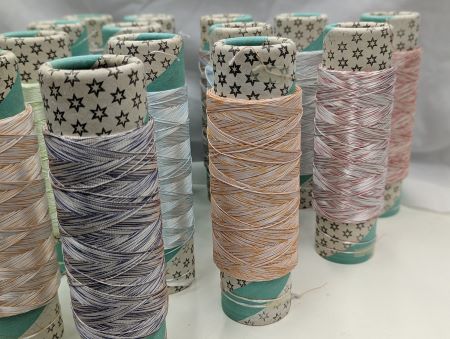
Smart textiles have so much possibility in the medical field, including wound healing and vital signs monitoring. Sensor yarns are a part of this future, as discussed by representatives of the German Institutes of Textile and Fiber Research Denkendorf (DITF) at the recent Advanced Textiles Expo in Orlando.
Bastian Baesch, head of sensors and actuators for the institute, gave an overview of the yarn wrapping technology and its adaptability. Just about any yarn can be wrapped with the sensor wires, which can be made of any metal—or even be more than one—depending on the electrical properties needed for the application. Sensor yarns are usable in industrial textile processes including knitting, weaving, and embroidery and have been tested through typical manufacturing steps, including washing, drying, dyeing, heat setting, thermo-calendering and pleating.
Carsten Linti, head of technology center biomedical engineering for DITF, presented on research into sensory wound dressings, which could monitor chronic wounds, or those that take more than 30 days to heal, for example, pressure ulcers for people with limited mobility and foot sores for diabetics.
In addition to the normal functions of a bandage, multilayer sensory dressings could monitor pH, moisture level and temperature in a wound and relay that information to health practitioners, serving to reduce unnecessary dressing changes while simultaneously allowing for the early detection of inflammation due to bacterial infection. The research is preliminary and still needs to be proven in a dynamic environment, but the cost of chronic wound care could amount to a $13.6 billion market globally by 2025, he cited. DITF’s part in the development of the wound dressing was the moisture sensor yarn later; the project was part of the ULIMPIA project, and seven researchers from four different organizations took part in its development.
Other uses for sensor yarns integrated into smart textiles could include any kind of “location-independent” health monitoring, Baesch noted, from the unborn and infants to adults needing unobtrusive monitoring of stress levels, heart function or fitness rehab. Emergency personnel could be alerted of a fall without the need to press a button. The data would be wirelessly transmitted without the need for additional electrical components or energy sources in the textile.
“All kinds of textiles can be sensorized by wrapped yarns,” Linti said.
 TEXTILES.ORG
TEXTILES.ORG


